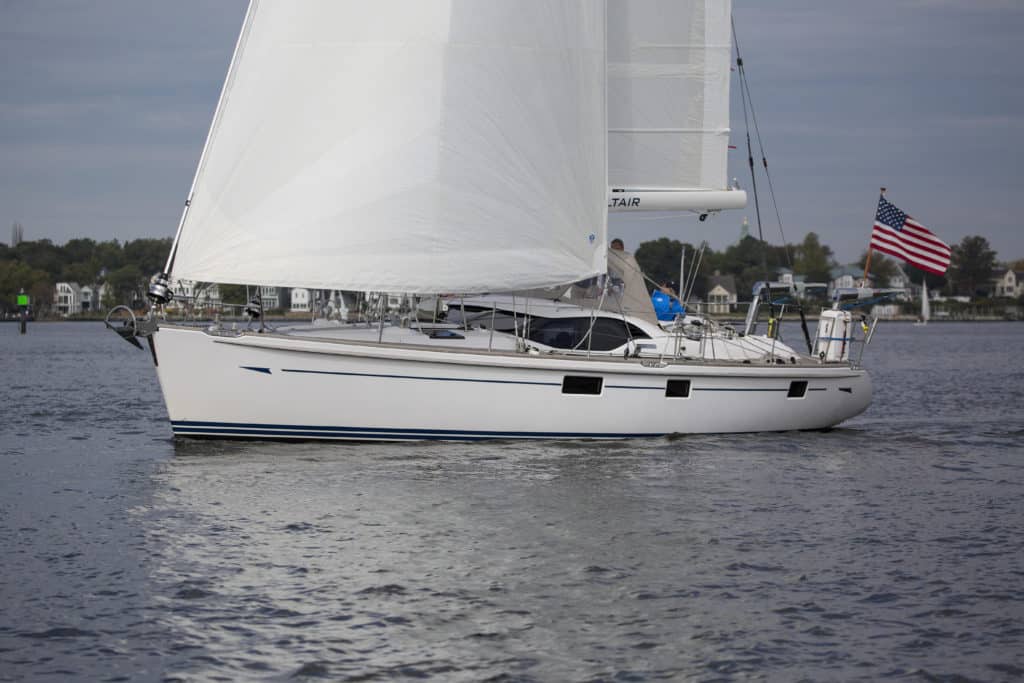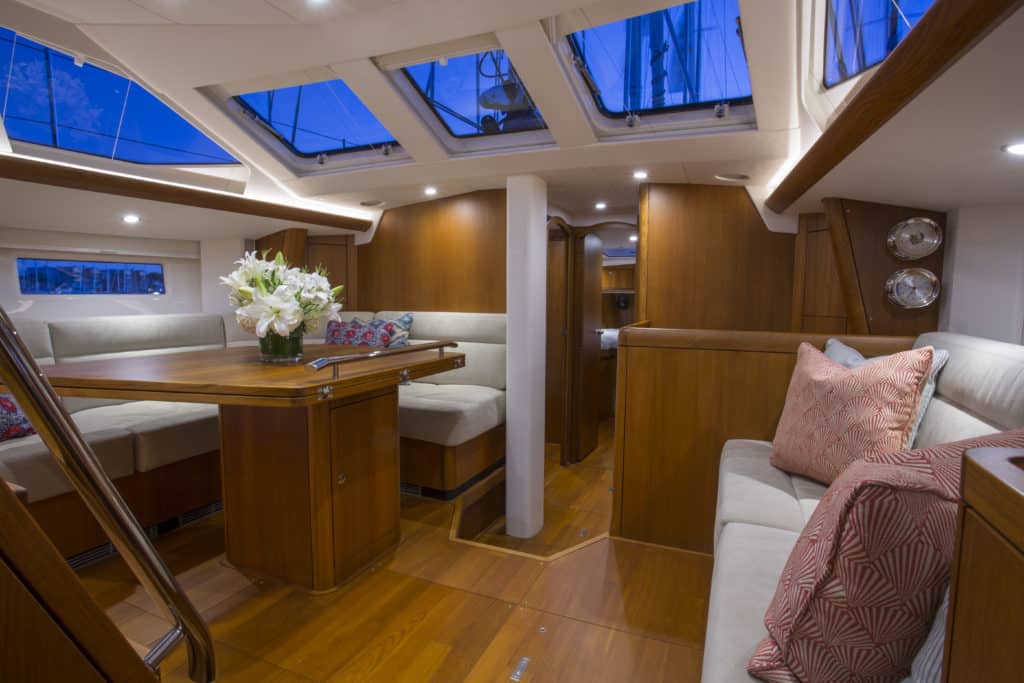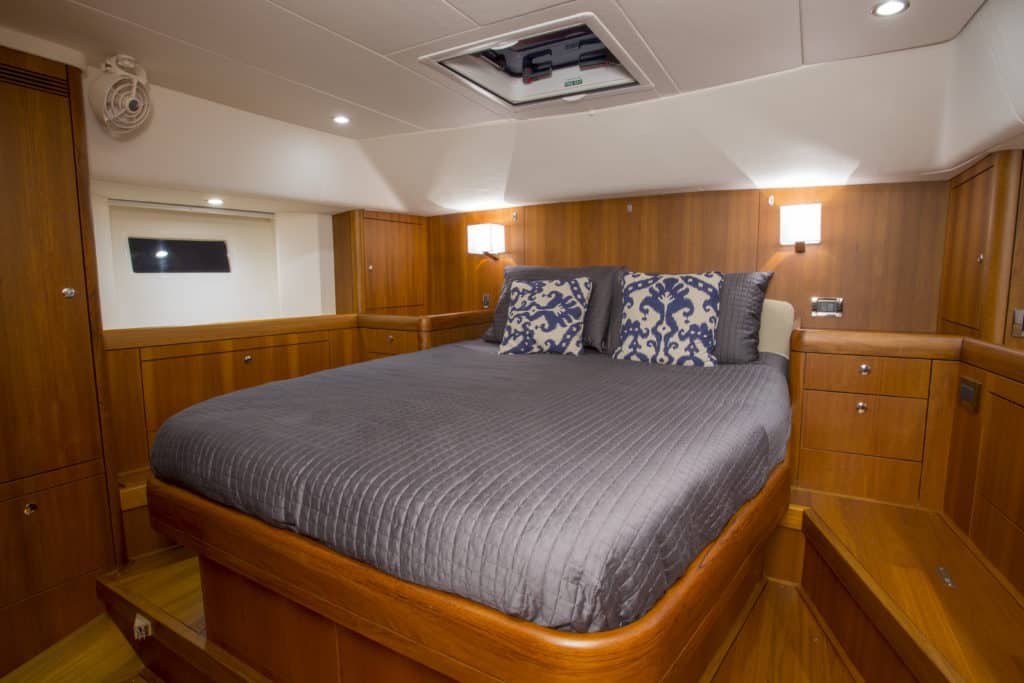
There are few companies in the boatbuilding universe quite like Oyster Yachts. For over four decades now, the iconic British brand has been crafting long-legged luxury cruisers manufactured to high standards to roam the watery world. For 2016, Oyster has introduced its new 475. At just under 49 feet, it’s the smallest in a current range of nine models topped off by a massive 118-footer.
We tested the boat on Chesapeake Bay as a nominee in this year’s Boat of the Year contest, and judge Tim Murphy, who doubles as our resident marine-industry seer, provided this historical perspective:
“Founded by Richard Matthews, who sold the firm in 2008, Oyster is a new company with an old name. There are few companies that were created so closely to one man’s image. For Matthews, the business wasn’t just about boatbuilding. And that’s something that hasn’t changed under new management. Sailors who purchase Oysters buy into a whole lifestyle. Oyster owners get together for rallies and regattas; they’ve joined a club. So the company does a lot of customer service, both on the technical and social sides. That social component is part of the value in owning an Oyster.”
All that is true, but there’s something else about the Oyster experience: Savvy sailors can identify one when they see it. There’s a certain familiarity in almost the entire line’s DNA, and so it goes with the 475: the deep center cockpit; the wraparound window surrounding the coachroof; the embedded rectangular portlights in the hull; the recessed scoop transom with drop-down steps leading to a pronounced boarding and swim platform. Man, you don’t need a program to know this player.
As befits a yacht with a seven-figure price tag, the craftsmanship is impeccable. The solid glass hull laminate is coated in an outer layer of protective vinylester resin. Balsa is employed in the sandwiched deck structure (except in high-load areas, where the coring material is plywood). Individual quarter-sawn teak planks top deck surfaces as well as the cockpit seats and sole. The substantial bulwark is also finished with a thick teak caprail. The operative word as you step aboard the 475 is “solid,” like a rock.
On deck, there’s a whole lot happening. Aft, a split backstay facilitates easy access to the transom steps; the lazarette locker on the afterdeck is humongous. The center-cockpit coaming is raised, but not so high that it impedes movement to and from the side decks, an all-too-common issue in central cockpit designs.

The standard 475 is a sloop with a traditional, fully battened mainsail, but our test boat was rigged as a cutter with Furlex furlers for the dual headsails and a Romar Leisure Furl main. I’m no fan of furling mains, but if you must have one, the in-boom Leisure Furl is definitely the way to go. The backstay and vang are controlled hydraulically. The hardware (winches, headsail tracks, traveler, windlass and so on) is all high-quality, dependable kit from Lewmar. One of the few odd, questionably executed items is the optional mast pulpits, which are mounted way too close to the Selden aluminum spar — and its attendant halyard and reefing winches — to be of much utility.
Down below, the layout is highly compartmentalized. Descending five rather steep companionway stairs, you’ll find the heart of the boat is the raised saloon, bathed in natural light and featuring comfy opposing settees, as well as a very clever folding dining table that opens up for beam-to-beam dinner parties.
From there, heading aft, it’s another two steps down to either the straight-line galley (to port, with a stand-up fridge, abundant counter space and a big four-burner stove/oven) or the expansive navigation station (to starboard, and doubling as an onboard office). The owner’s suite is all the way aft and features a large berth with access from both sides, along with loads of adjacent closets, lockers and drawers. The adjoining private head is spacious, with an enclosable shower stall. The forward end of the yacht, down another step from the saloon, has a second big head and a pair of guest cabins, one with bunk-bed berths and another with a V-berth. The joiner work throughout is fabulous.
During sea trials, under power, the Yanmar 75-horsepower diesel, a saildrive auxiliary spinning a three-bladed Varifold prop, scooted us along at just over 7 knots with the throttle down. To our judging panel, the speed seemed modest. Backing down was somewhat problematic; our test model came with the optional bow thruster, which is recommended for close-quarters maneuvering.
Where the boat truly came alive was under sail, even though the light-air conditions were far from ideal. Designer Rob Humphreys is renowned for fully found cruisers that still perform well, and the 475 will do nothing to sully his hard-earned reputation. Though the breeze hardly rose above 6 knots, closehauled with everything sheeted home, the boat was as fast as the wind. Visibility forward was quite good, even with the very well-done dodger in the sightlines. (This is a cockpit you could spend a lot of time in.) One notable thing: There is some serious cordage on the 475. It’s a veritable spaghetti factory. You don’t notice it when everything is tidied up at the dock, but underway, it’s something you want to keep on top of.
Going forward, the second Oyster World Rally will commence from Antigua in January 2017, and over three dozen crews have already signed up for the 27,000-mile circumnavigation. The only catch? You need an Oyster. The 475, certainly, would be one hot ticket to ride.









